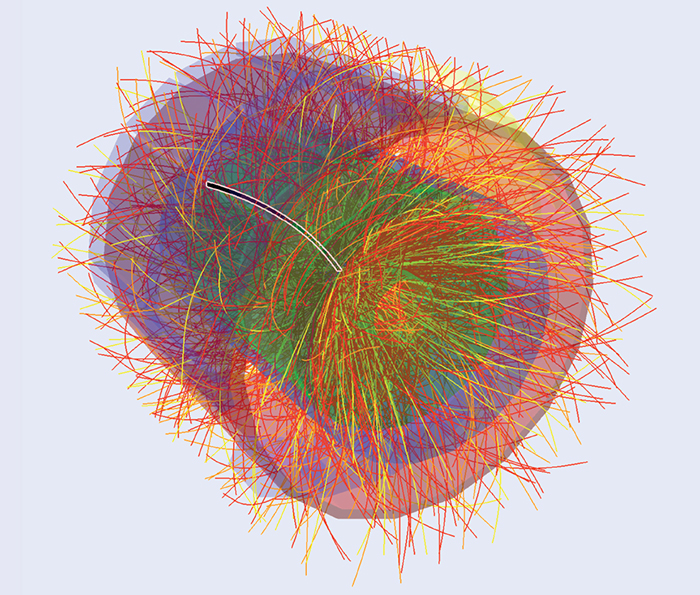The ALICE experiment at the LHC finds not only standard hadrons in the debris of the “fireballs” produced in heavy-ion collisions, but also composite, loosely-bound objects such as deuterons and light hypernuclei and their antiparticles. Studies show that the measured yields of these fragile objects agree very well with the calculations used for hadrons, implying that the yields are determined at the phase boundary between the quark-gluon plasma of the fireball to the hadron gas. But how is this possible for such loosely-bound systems, which are larger than the separation between hadrons at the time of "freeze-out", when the majority of them stop interacting? How can these "snowballs" survive "hell"? The answer lies in thermodynamics.
Read more : "ALICE investigates 'snowballs in hell' - CERN Courier

